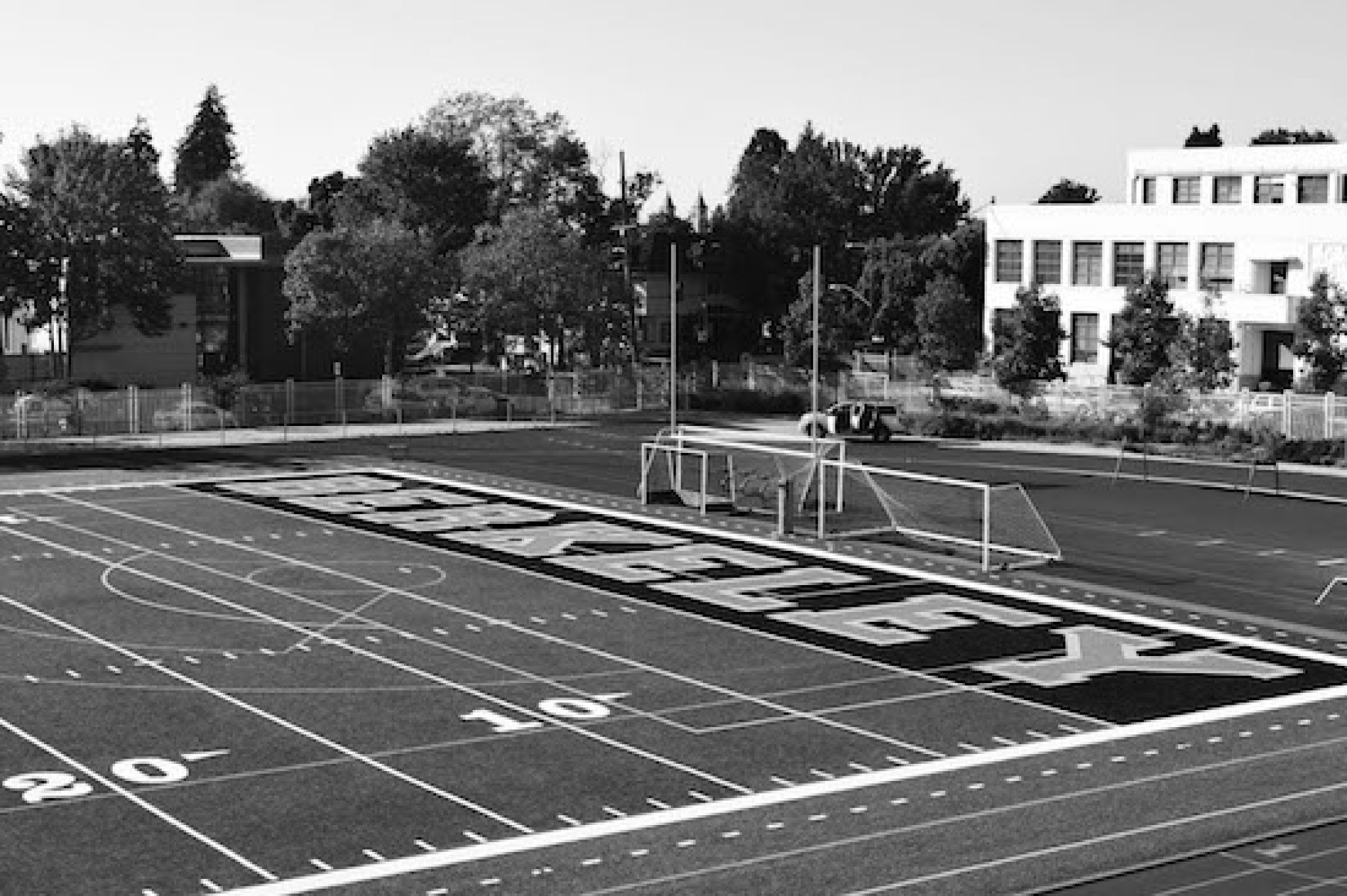Photograph by Roan Linville
Berkeley High School (BHS) athletes returned from the summer to an unexpected treat this year: BHS had renovated their football field. According to Jeffrey Snow, the Facilities & Operations Manager at BHS: “The old field had reached its life expectancy. It was worn out and been patched in several locations and was becoming unsafe for use.” Given that the field required renovation, BHS took full advantage of this opportunity by replacing the turf with cork, a much healthier material.
The artificial turf field used to be made out of different fibers and had recycled tires for the infills. While the research relating tire chemicals and cancer is limited, scientists do know that microscopic particles break off from the recycled tires, becoming so small that they are inhalable. When the temperature outside rises, turf fields with tire infills become abnormally hot and more chemicals are released into the air, making them easier to inhale.
Due to the fact that tires can absorb any chemicals they were exposed to, there is some concern that artificial turf gives off hazardous toxins. In addition, lead, which is also in tires, has been known to cause permanent problems with the functionality of blood, kidneys, hearts, nerves, stomachs, and the reproductive systems.
Ouahiba Laribi, a toxicologist who works at the California Office of Environmental Health Hazard Assessment (OEHHA) which is part of the California Environmental Protection Agency (CalEPA), expressed that there is a potential health risk of turf with tire infills. Laribi did, however, express that her views do not necessarily represent those of CalEPA.
The CalEPA is currently performing a human health risk assessment regarding how artificial turf affects athletes, bringing nationwide attention to this pressing issue. Laribi noted that the tires used on playgrounds and turf fields are considered too toxic to put in the landfill; however, field producers still put tires on their fields. These health concerns partially outline why BHS decided to replace the field with cork.
Laribi said that “right now [CalEPA] doesn’t think [cork infills] are as risky as tires.” Cork infills are seen as a better option than tire infills because they are biodegradable, and they don’t hold the same toxic chemicals tires have. However, there has not been an assessment to prove this theory.
Some disadvantages of having cork turf fields are that they are made out of trees, need lots of water, die quicker than tire fields, and are expensive. Laribi also discussed the environmental justice aspect of cork fields. “People are willing to pay more money and pressure the city to change [their fields to] something that’s less risky,” she said. “However, it is only done in the rich counties that can afford it.”
The field is supposed to last ten to fifteen years, according to Snow. The plans were finalized midway through the year, and the contract for the new design was awarded sometime in April or May. Snow said, “The contract amount was $730,000. [This] includes the removal and disposal of the old field and installation of the new field.”
When asked where the money for the renovation came from, Snow said that the funds came from money that is specifically meant to be spent on Berkeley Unified School District (BUSD) facilities. Snow also said that with a bigger budget BHS would have liked to repaint the track lines, although the new field now includes field hockey lines, which it previously lacked.
Overall, the new field is beneficial for all students. Not only does it provide a safer and more efficient place for students to play sports at BHS, it also benefits teams such as field hockey by providing clear lines. Despite the cost, the renovation was a positive step in creating less toxic fields. As Laribi said, “There’s no price for me for cancer.”





